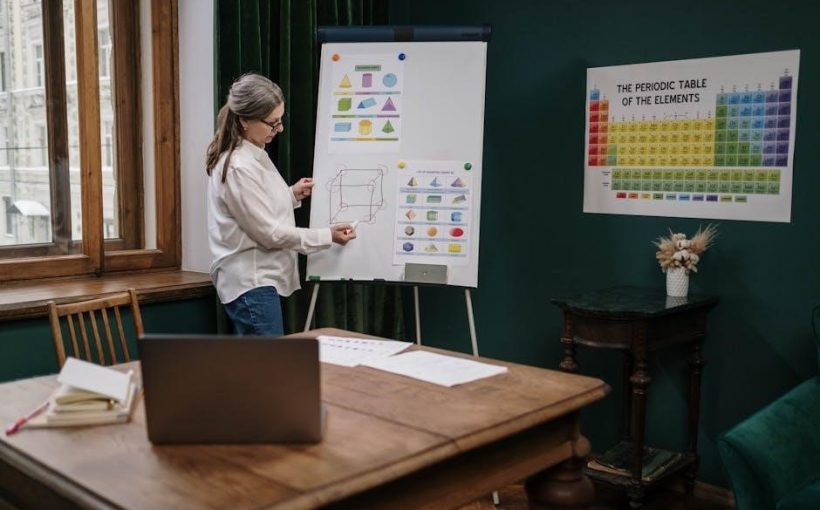Act 2 of Romeo and Juliet deepens the emotional journey, exploring love, fate, and conflict. It introduces pivotal moments, including the balcony scene and Friar Laurence’s plan, while highlighting the tension between love and hate, setting the stage for tragedy.
1.1. Overview of Act 2
Act 2 of Romeo and Juliet intensifies the emotional and dramatic tension. It introduces pivotal scenes like the balcony encounter and Friar Laurence’s plan, while deepening the feud between the Montagues and Capulets. The act explores themes of love, fate, and conflict, showcasing Romeo and Juliet’s determination to be together despite the escalating violence and societal obstacles surrounding them.
1.2. Key Themes in Act 2
Act 2 explores themes of love, fate, and conflict. Romeo and Juliet’s bond deepens, while the feud between their families escalates. Friar Laurence’s plan highlights hope and risk, and dramatic irony intensifies tension. The duality of nature, as seen in Friar Laurence’s soliloquy, underscores the interplay of light and darkness, symbolizing the lovers’ tragic destiny and the inevitable clash of love and hate.
Scene 1: A Public Place in Verona
Mercutio and Benvolio discuss Romeo’s absence, unaware of his love for Juliet. Their banter highlights Romeo’s emotional shift, setting the stage for his new passion.
2.1. Summary of Scene 1
In Scene 1 of Act 2, Mercutio and Benvolio discuss Romeo’s mysterious absence, unaware of his new love for Juliet. Their conversation reveals Romeo’s emotional transformation, as they tease him about his recent melancholy. The scene sets the stage for Romeo’s journey, showcasing his friends’ confusion and the growing tension between love and loyalty.
2.2. Analysis of Mercutio and Benvolio’s Conversation
Mercutio and Benvolio’s dialogue in Scene 1 reveals their concern for Romeo’s mysterious absence, showcasing their camaraderie and humor. Their teasing highlights Romeo’s emotional transformation, as they remain unaware of his love for Juliet. This exchange underscores the tension between loyalty to friends and the pursuit of romantic love, while also emphasizing Mercutio’s witty yet oblivious nature to Romeo’s deeper struggles.

Scene 2: The Balcony Scene
The balcony scene showcases Juliet’s declaration of love and Romeo’s passionate response, emphasizing the emotional depth of their connection amidst the conflict of their families’ feud.
3.1. Summary of the Balcony Scene
In the balcony scene, Juliet confesses her love for Romeo, unaware he is listening. Romeo reveals himself, and they exchange vows of love, deciding to marry despite their families’ feud. Juliet’s emotional declaration highlights her deep feelings, while Romeo’s presence intensifies the romantic tension, setting the stage for their secret union and the tragic events that follow.
3.2. Romeo’s Famous Lines: “What Light Through Yonder Window Breaks?”
Romeo’s iconic line, “What light through yonder window breaks?” captures the magic of his first glimpse of Juliet on her balcony. This poetic declaration expresses his awe and romantic wonder, using light as a symbol of Juliet’s radiance and purity. The line embodies Romeo’s deep adoration and sets the tone for their star-crossed love story, becoming one of Shakespeare’s most celebrated passages.

Scene 3: Friar Laurence’s Cell
Romeo visits Friar Laurence, seeking his help to marry Juliet. The Friar, believing their union could end the feud, agrees to perform the secret ceremony.
4.1. Summary of Scene 3
In Friar Laurence’s cell, Romeo reveals his love for Juliet and asks the Friar to marry them. The Friar agrees, believing their union could end the families’ feud. He plans to use herbs to make Juliet appear dead, hoping this ruse will allow her to escape her arranged marriage and reunite with Romeo. This decision sets the tragic events in motion.
4.2. Friar Laurence’s Soliloquy on the Duality of Nature
Friar Laurence’s soliloquy highlights the duality of nature, where even the vilest substances can yield good. He reflects on how herbs and plants, though harmful in excess, offer benefits in moderation. This mirrors his belief in balance and his hope that Romeo and Juliet’s union might end the feud, showcasing his optimistic yet risky plan to unite the lovers.

Scene 4: A Public Place in Verona
Mercutio teases Romeo about his love for Juliet, unaware of their secret marriage. The scene showcases the camaraderie and tension among friends, foreshadowing future conflicts.
5.1. Summary of Scene 4
In Scene 4, Mercutio and Benvolio search for Romeo, discussing his recent absence. When Romeo arrives, Mercutio teasingly discusses Romeo’s love, unaware of his marriage to Juliet. The scene highlights Mercutio’s humor and the growing distance between Romeo and his friends, as Romeo’s focus shifts to Juliet, intensifying the emotional conflict and foreshadowing future tragedy.
5.2. Mercutio’s Teasing of Romeo
Mercutio playfully mocks Romeo about his lovesickness, unaware of his secret marriage to Juliet. Using humor and wit, Mercutio accuses Romeo of being distracted by love, highlighting the shift in Romeo’s behavior. His teasing underscores the bond of friendship while revealing Romeo’s emotional transformation, as Mercutio remains oblivious to the depth of Romeo’s feelings for Juliet.
The Theme of Love vs. Hate in Act 2
Act 2 intensifies the conflict between love and hate, as Romeo and Juliet’s bond deepens, while the feud between their families escalates, foreshadowing tragic consequences.
6.1. Romeo and Juliet’s Love
Romeo and Juliet’s love in Act 2 evolves from infatuation to profound commitment. The balcony scene showcases their deepening connection, with Romeo declaring his love openly, while Juliet, though hesitant, reciprocates passionately. Their union symbolizes the redemptive power of love amidst the violent feud, highlighting their willingness to risk everything for each other, despite the impending danger their families’ hatred poses.
6.2. The Feud Between the Montagues and Capulets
The feud between the Montagues and Capulets intensifies in Act 2, creating a volatile backdrop for Romeo and Juliet’s love. The families’ hatred escalates tensions, with public confrontations highlighting their deep-rooted animosity. This ongoing rivalry not only complicates the lovers’ relationship but also foreshadows the tragic consequences of their families’ unrelenting vengeance, underscoring the destructive nature of their enduring conflict.

The Role of Fate in Act 2
Fate dictates the lovers’ path, as the prologue foreshadows their tragic end. Romeo and Juliet’s impulsive decisions, driven by fate, accelerate the inevitable and heartbreaking conclusion.
7.1. Foreshadowing of Tragedy
The prologue and Friar Laurence’s soliloquy hint at the inevitable tragic outcome. Romeo and Juliet’s hasty marriage and the escalating feud foretell the devastating events that will unfold, emphasizing fate’s role in their doomed love story.
7.2. The Impulsiveness of Romeo and Juliet
Romeo and Juliet’s impulsive decisions drive the plot’s tragic progression. Romeo’s swift marriage proposal and Juliet’s agreement, despite familial conflicts, highlight their emotional overriding of reason. Their rash actions, like Juliet faking death, showcase how their passion leads to hasty choices, accelerating the inevitable tragic outcome and deepening the play’s dramatic tension.

Character Development in Act 2
Romeo matures emotionally, driven by passion, while Juliet exhibits determination, showcasing her growth from innocence to bold decision-making, highlighting their evolving personalities in Act 2.
8.1. Romeo’s Transformation
Romeo undergoes significant growth in Act 2, transitioning from a lovesick youth to a determined lover. His passion for Juliet deepens, driving him to seek marriage despite obstacles. His emotional journey highlights a shift from impulsive behavior to resolute decision-making, showcasing his evolving maturity and commitment to their love, despite the societal conflicts surrounding them.
8.2. Juliet’s Growth as a Character
In Act 2, Juliet evolves from an obedient daughter to a self-determined individual. Her balcony soliloquy reveals deep emotional awareness, showcasing her maturation. She defies societal norms by pursuing love with Romeo, demonstrating courage and independence. Her growth highlights her transformation into a strong-willed woman willing to risk everything for love, despite the familial feud and societal expectations.

The Role of Friar Laurence in Act 2
Friar Laurence plays a pivotal role in Act 2 by devising a plan to unite Romeo and Juliet through marriage, believing love can end the feud.
9.1. Friar Laurence’s Plan to Marry Romeo and Juliet
Friar Laurence devises a plan to marry Romeo and Juliet in secret, believing their union could end the feud between their families. He agrees to perform the ceremony in his cell, hoping their love will bring peace. This decision showcases his belief in love’s transformative power and sets the stage for the tragic events that unfold.
9.2. His Motivations and Beliefs
Friar Laurence believes in the transformative power of love and hopes Romeo and Juliet’s union will end the feud. He sees their bond as a divine opportunity for peace and believes in the duality of nature, where even seeming evils can lead to good. His faith in a higher purpose drives his actions, reflecting his belief in love’s redemptive power and its potential to heal societal divisions.
Symbolism in Act 2
Act 2 is rich in symbolism, with the balcony representing both separation and unity. Light and darkness imagery contrasts purity and conflict, reflecting the lovers’ forbidden yet transcendent love;
10.1. The Balcony as a Symbol of Separation and Unity
The balcony symbolizes separation and unity, dividing the lovers physically yet connecting them emotionally. It bridges their worlds, allowing secret declarations. Light imagery contrasts with darkness, highlighting purity amidst conflict, making the balcony a poignant symbol of their enduring love despite obstacles.
10.2. Light and Darkness Imagery
Light and darkness imagery in Act 2 contrasts purity with conflict. Juliet is often associated with light, symbolizing her innocence and hope. Darkness, however, represents secrecy and the dangerous reality of their situation. Romeo’s “What light through yonder window breaks?” highlights this dichotomy, emphasizing their love’s transcendence despite the shadows of feud and fate surrounding them.

Dramatic Irony in Act 2
Dramatic irony in Act 2 heightens tension as the audience anticipates tragic outcomes, while characters remain unaware. Friar Laurence’s plan and the lovers’ vows create poignant suspense.
11.1. Examples of Dramatic Irony
In Act 2, dramatic irony occurs when Friar Laurence devises a secret plan to marry Romeo and Juliet, unaware of the tragic consequences. Another example is Juliet’s balcony declaration of love, which Romeo overhears, creating tension as the audience knows the potential for conflict. These moments highlight the characters’ unawareness, intensifying the emotional impact and foreshadowing the inevitable tragedy.
11.2. Its Impact on the Audience
Dramatic irony in Act 2 heightens tension and emotional engagement. The audience knows secrets, like Friar Laurence’s plan, while characters remain oblivious. This creates suspense, as viewers anticipate potential tragedies. It also evokes empathy, as the audience witnesses the characters’ unawareness of impending doom, intensifying the play’s emotional depth and making the inevitable tragic outcome more poignant and impactful.
Shakespeare’s Language and Style in Act 2
Shakespeare’s language in Act 2 is rich with metaphors and poetic imagery, enhancing emotional depth. Soliloquies, like Juliet’s balcony speech, reveal inner thoughts, while Romeo’s lines showcase lyrical beauty.
12.1. Use of Metaphors and Similes
Shakespeare employs vivid metaphors and similes in Act 2 to enrich the narrative. Romeo compares Juliet to the sun, using metaphors to convey her brilliance and transformative impact. Similes, such as likening love to a rose, add depth and emotional resonance, making complex emotions relatable and vivid for the audience to connect with deeply.
12.2. Soliloquies and Their Significance
Soliloquies in Act 2 reveal deep character emotions and inner conflicts. Juliet’s balcony speech and Romeo’s declarations showcase their passionate longing and existential musings. These moments allow characters to express unspoken truths, providing insight into their motivations and desires. Soliloquies enhance dramatic tension and deepen audience connection, making the emotional journey of Romeo and Juliet profoundly relatable and impactful;

Study Tips for Act 2
Engage actively with the text by analyzing key scenes and soliloquies. Use study guides and flashcards for memorization. Focus on understanding character motivations and themes to deepen your comprehension of the play.
13.1. Key Questions to Ask When Reading
What motivates Romeo to pursue Juliet despite the families’ feud? How does Friar Laurence’s plan reflect his beliefs? What role does fate play in the lovers’ decisions? How do Mercutio’s taunts reveal his character? What symbolic meaning lies in the balcony scene? How does Juliet’s soliloquy showcase her growth? What tensions arise from the Montagues’ and Capulets’ hatred? How do Romeo’s actions reflect impulsiveness? What themes emerge in Friar Laurence’s soliloquy on nature’s duality?
13.2. How to Analyze Key Scenes
Analyze key scenes by identifying themes, character motivations, and dramatic irony. Examine dialogue for emotional depth and language use. Consider the balcony scene’s symbolism and Romeo’s soliloquy for insight into his passion. Study Friar Laurence’s cell for his motivations and the implications of his plan. Look for foreshadowing and how scenes build tension, preparing for the tragic outcome in Act 3.
Act 2 of Romeo and Juliet deepens the emotional journey, presenting pivotal moments like the balcony scene and Friar Laurence’s plan. It highlights the tragic fate and intense conflict between love and hate, setting the stage for the devastating events of Act 3.
14.1. Recap of Act 2’s Significance
Act 2 of Romeo and Juliet is pivotal, showcasing Romeo and Juliet’s deepening love, Friar Laurence’s hopeful plan, and the escalating feud. The balcony scene highlights their emotional connection, while Mercutio’s teasing and the families’ animosity foreshadow tragedy. This act establishes central themes of love vs. hate and fate, setting the stage for the inevitable heartbreak in Act 3.
14.2. Preparation for Act 3
Act 2 concludes with heightened tensions, as Romeo and Juliet’s secret marriage and Friar Laurence’s potion plan set the stage for impending conflict. The escalating feud and Mercutio’s provocative nature hint at a tragic confrontation. These events create anticipation for the devastating consequences of impulsive decisions and the unrelenting animosity between the families in Act 3.

Additional Resources for Act 2
Utilize Quizlet flashcards for key terms and study guides. Explore online analyses and summaries for deeper insights into scenes, themes, and character development in Act 2.
15.1. Recommended Study Guides
For Act 2, consider using SparkNotes, CliffNotes, or the Folger Shakespeare study guides. These resources provide detailed summaries, character analyses, and critical essays. Digital tools like Quizlet offer flashcards and interactive exercises to enhance understanding. Additionally, online summaries and study tips from educational websites can aid in analyzing key scenes and themes, ensuring a comprehensive grasp of the act’s significance.
15.2. Online Resources for Further Analysis
For deeper analysis, explore online resources like SparkNotes, Quizlet, and educational websites offering detailed Act 2 summaries. YouTube channels provide video analyses, while forums and blogs share diverse interpretations. Utilize these tools to gain insights into themes, character development, and dramatic devices, enhancing your understanding of Shakespeare’s craftsmanship in Romeo and Juliet.
